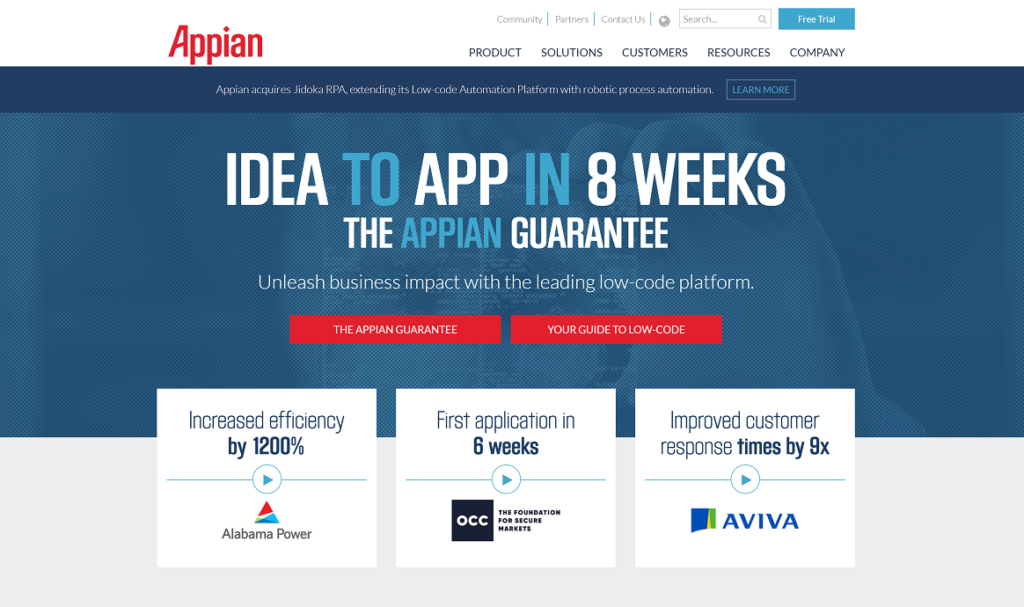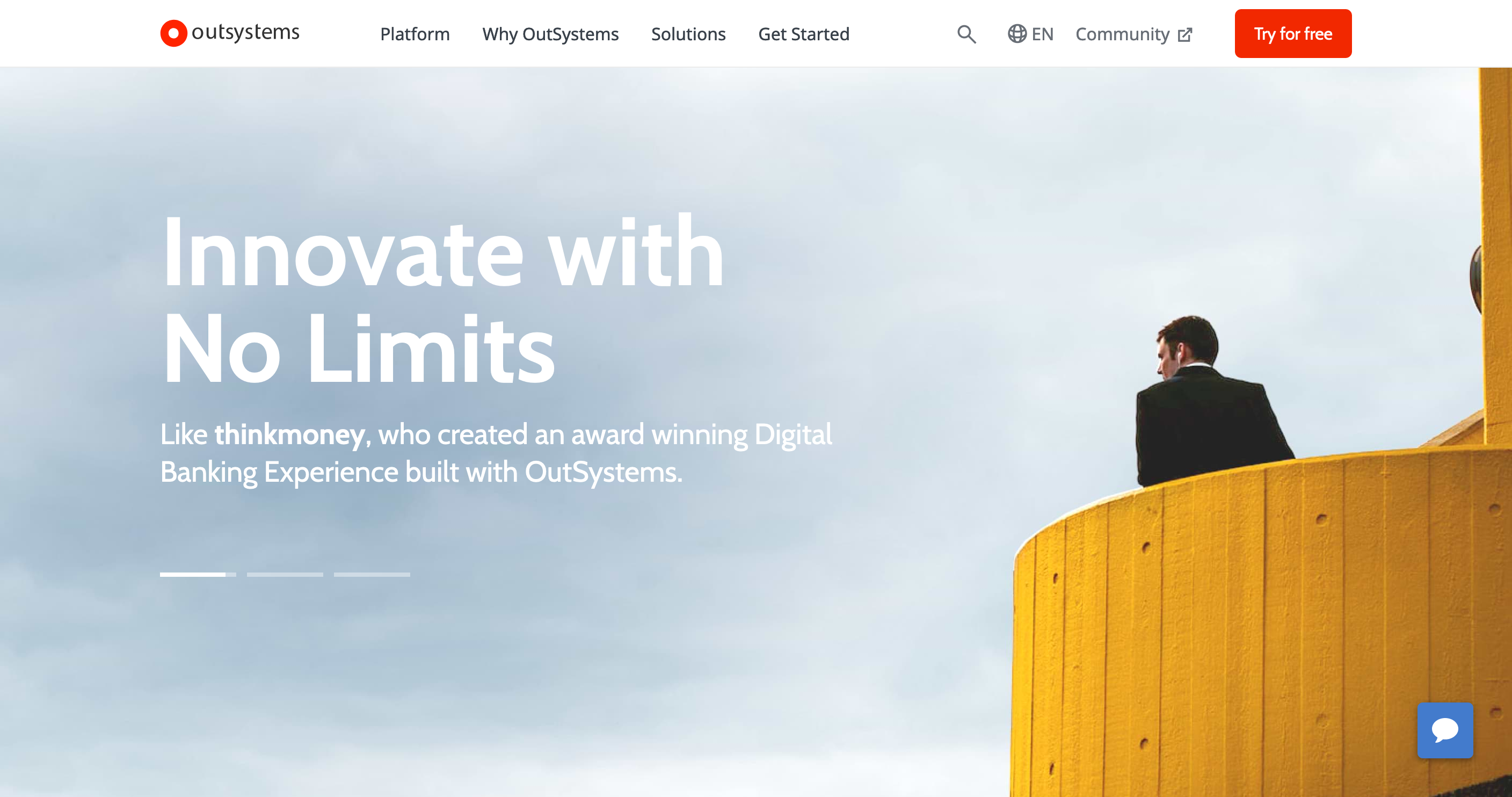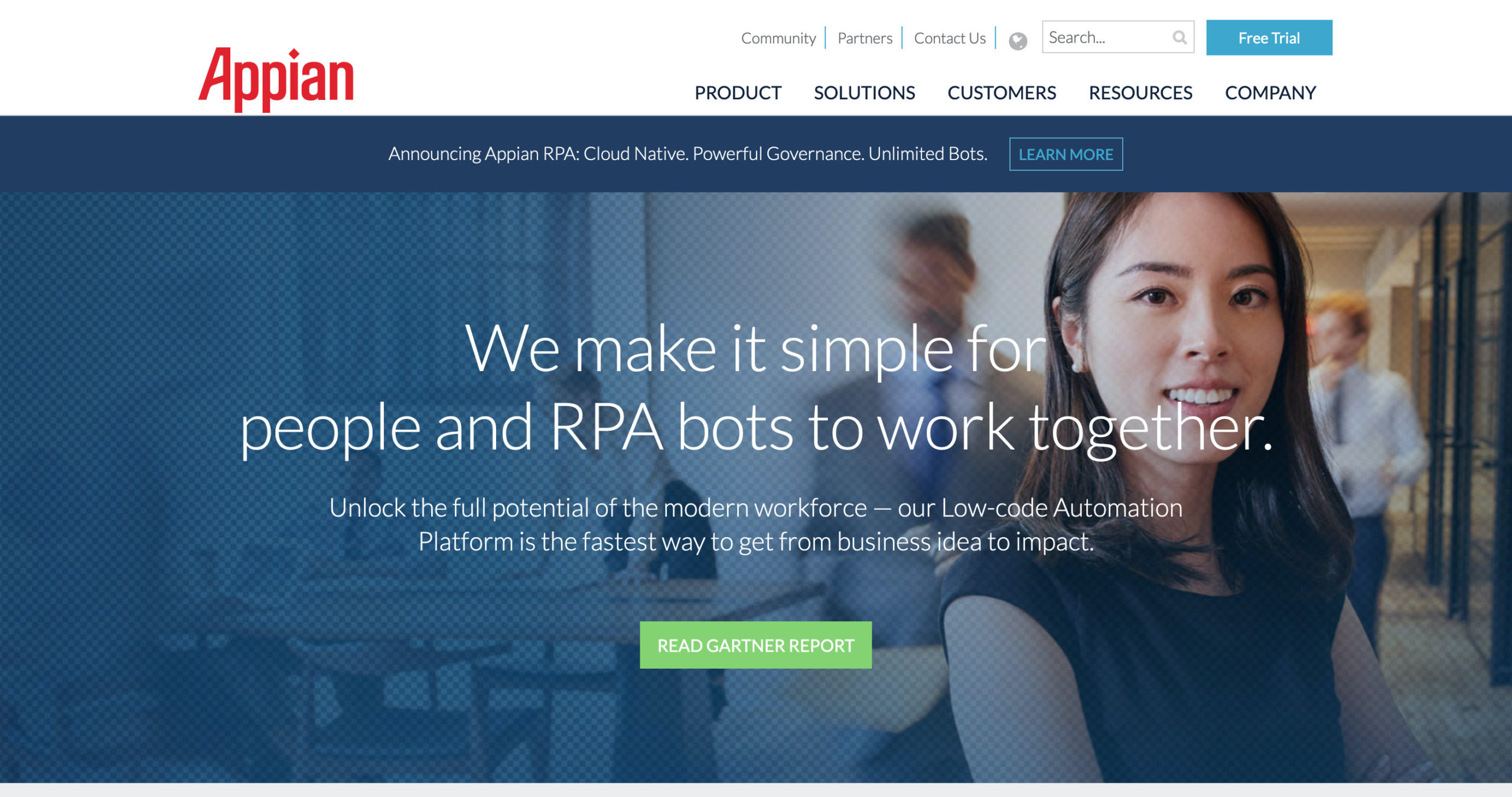Low-code development platforms (LCDP) are at the forefront of a digital transformation that millions of companies around the world are already benefiting from. They contribute to the simplification of the software building process, thus allowing businesses to reap direct benefits from their data and processes with less effort.

Alexandra Müller
Guides
Low-code apps development platforms are at the forefront of a digital transformation that millions of companies around the world are already benefiting from. They contribute to the simplification of the software building process, thus allowing businesses to reap direct benefits from their data and processes with less effort.
The use of low-code platforms is diverse. With their help, IT departments can create low-code apps, saving time, and effort in comparison with the classical development method. The platforms, however, can go much further, encompassing all development tasks. IT specialists can create with them business workflows and processes, as well as other software products and elements.
The application of low-code development is not limited to a single industry or company type. In fact, businesses from various fields and sizes can use it. It allows them to innovate and move towards digitization in an affordable and easier way.
Low-code platforms, in essence, offer a streamlined and easier software development process. They require much smaller engagement from the side of software developers in comparison with the regular building. The platform provides the user with an intuitive graphical interface that replaces parts of the typical code writing. Unlike no-code apps, in the case of low-code development, there is at least a need for input from IT developers or consultants. Users still have to have a technical understanding and background in order to use low-code.
Let’s take a look at the essentials about low-code apps and platforms, and how they work for your business.
In a nutshell, low-code platforms can be considered as an option for fast development for software specialists. They help in reducing the workload of IT teams since the platform handles the infrastructure and pattern re-implementation. This is a much-needed alternative in today’s business landscape, where software development needs are growing exponentially. Low-code development automates the lengthy hand-coding process, allowing developers to focus their attention on the significant elements in the projects.
The terms low-code and no-code are often used interchangeably by platform providers, as well as the media. No-code is sometimes seen as a niche in the low-code market. While the two notions are still in the process of being properly defined, there is a clear difference between them.
No-code app development platforms allow anybody to create an app – thus giving rise to the ‘citizen developer’ concept. With such platforms, any employee can set up an app in minutes and deploy it quickly – often within a pre-set environment controlled by the IT department. No-code platforms bring flexibility and speed to the digital transformation of larger companies. They also empower individual professionals and small businesses – who do not have sufficient IT resources and skills – to benefit from the latest software innovations.
As for low-code platforms – even with no-code elements, they are not a replacement for traditional software development, but an addition that saves IT professionals’ time and effort. They offer elements that don’t require coding so that developers can use them as ready-made blocks. Thus, there are no-code elements, but they still need to be used by a professional developer and to be supplemented with coding. While some LCDPs offer no-code elements, they are nevertheless designed to be used by IT professionals or consultants. Pure no-code platforms such as Open as App, however, are based on the understanding that no-code is for everyone – even for people without a professional IT background.
There are diverse low-code tools, ranging from classical development and business process management (BPM) platforms that have to be handled by IT specialists to platforms that enable other employees who have IT knowledge to build apps, design business processes, and connect data sources.
As with no-code app development, the approach towards low-code also differs from the conventional way of building. In traditional software development, the approach is imperative. This means that the developer sets, for example, what an app will do, as well as how it will do it. In no-code and low-code, the declarative approach is used instead. The user of the platform inputs what the app will do. Still, there are differences between no-code and low-code in how they employ the declarative approach. In the case of no-code, there is no coding involved. However, low-code platforms require more hardcore coding towards the core functionality of the app.

Source: www.appian.com
They are driven by visual programming and automatic code generation principles. Employing visual declarative techniques similarly to no-code platforms, LCDPs allows users to create apps, workflows, databases, business processes, etc. through a graphic interface rather than through manual coding. The platforms offer an environment in which the workflows, data models and user interfaces are set visually, and then can be complemented with hard coding if needed. They automatically connect to the back-end and manage data storage and usage. The difference with no-code is that low-code platforms provide more options for UX and design, but this requires complex coding.
As with no-code, deployment and roll-out of the low-code products are handled by the company creating them. This, however, has to be done by an IT department or technical consultants, since it can be quite complicated. In the case of mobile apps, it also requires app store accounts and following the respective publication processes. In any case, it involves a financial investment by the company.
The beauty of low-code platforms is in their powerful input towards the digital transformation of businesses. Many companies need an easier and cheaper way to develop their IT landscape. The burden on software developers is heavier than ever. Here are a few of the benefits that low-code platforms bring.
The most notable impact of low-code is in the speed of software development and process management. Using a low-code platform can save hours and hours of your IT department’s time. Instead of creating code and syntax from scratch, the developers and general IT staff can use pre-existing elements and build new solutions on their basis. Using low-code platform helps IT teams in reducing their backlogs and focusing on the truly important tasks.
Low-code development goes beyond mobile app creation. Of course, businesses can create such applications, but they can also use LCDPs to set up multi-platform apps and various other software applications. Specifically for enterprises, low-code offers a cheaper and easier way to build business processes and workflows, which are tailored to their particular needs.
Developing with low-code is not dependent on a single programming language and doesn’t require companies to have IT departments with skills in all coding languages. This gives software developers a great level of flexibility and allows a more enhanced creative approach in the building process.
At the heart of low-code and no-code development is the strive for faster and cheaper business innovation. Indeed, digital transformation can happen much quicker when manual coding is reduced and substituted with automatic code generation.
Diverse types of companies can make use of LCDPs to meet their digital business needs. Some of the biggest beneficiaries of low-code development can easily be PaaS and SaaS vendors, as they seek new options for their business processes.
Another huge segment of companies that benefit from low-code is enterprise. Enterprises use low-code platforms to address a wide range of their necessities, such as business rule management systems (BRMSs), business process
management systems (BPMSs), multi-experience development platforms (MXDPs), and low-code application platforms (LCAPs).
For the time being, small businesses still cannot benefit so much from the potential of low-code platforms. This is due to the higher costs, as well as the need for dedicated IT professionals who can work with the more complex LCDPs. Smaller companies, though, can use no-code platforms, as they require a minimum financial investment and can be handled by non-technical staff.
As enterprises are commonly using low-code today, internal employee-facing (B2E) applications are the most typical use of low-code platforms. However, as the field is progressing, low-code development is also gradually being applied in B2B and B2C. business and consumer-facing uses are becoming possible due to the innovations in licensing models, as well as improvements in user experience.
One of the most common uses of low-code development platforms is to digitize and innovate business processes. With the help of LCDPs, enterprises and larger companies can streamline their processes. Their IT teams can build custom tools with less coding and by using ready-made elements.
Another common application of low-code is to create custom workflows in order to improve process management. This is also typically an option used by enterprises, which have much higher demand in that area. IT specialists at the respective company can easily build tailor-made features that meet the exact current needs.
Low-code app development comes in handy when adding features to existing software and databases as well. This can be done with great flexibility so that it’s suited to the particular business needs.
Low-code platforms can also be used to craft entire applications as well as mobile and web apps. This is probably the least used option by enterprises but is still an existing one. However, unlike with no-code platforms, for low-code development companies have to use their IT departments or external consultants, as hand coding is still necessary to create an app.

The Microsoft Power Platform is one of the undoubted leaders in the low-code field, with a focus on business process management. It helps companies to analyze their data, create tailor-made solutions, and automate their processes. Microsoft Power Platform allows different team members to craft custom apps, thus addressing the most current needs in their teams. Besides speed and ease of use, it also offers enterprise-grade security and reporting. The business application platform can be connected with Office 365, Dynamics 365, Azure, and many other apps.

As one of the most popular low-code platforms, Quick Base offers a wide range of capabilities for meeting the business application needs of diverse companies. Thus, it falls into the business process management field. Quick Base allows for the quick automation of processes and connects with many other work platforms. By democratizing the development process, it aims to free up IT departments’ time and increases overall efficiency. The common use cases of the platform are in process improvement, CRM and sales management, customer service, HR, field services, project management, and training management.

Mendix is a low-code application platform that aims to make business better. It allows for the creation of various software products – from enterprise-grade apps to simple tools. Mendix empowers the building of visual model full-stack applications. It can be done with no-code, low-code or custom code extensions. The platform nurtures collaboration in teams, as well as bridges business developers with software developers. It also boasts AI-assisted development.

The focus of the low-code development platform OutSystems is the creation of enterprise apps. It offers full-stack visual development and one-click deployment to meet the business process management needs of large companies. OutSystems also provides automatic refactoring of dependencies, as well as the creation and modification of reusable services and applications. It integrates with external enterprise systems, databases and custom apps and provides enterprise-grade security.

Appian is a prominent low-code platform that enables BPM digitalization. Backed by a simple design and intuitive experience, it enables faster software development for large-scale companies, as well as easy and secure deployment. Some of its top applications are in optimizing customer journeys, intelligent contact centers, operational performance, governance, risk and compliance (GRC), and robotic workforce management. Besides BPM, Appian also offers robotic process automation and AI improvement of applications.

AgilePoint defines itself as a low-to-no-code platform, blurring the lines between the two innovative software development methods. It enables the creation of responsive business applications, as well as the execution of process automation. With its business process management functionality, AgilePoint allows enterprises to create apps, set up interactive forms, connect to data sources, and manage processes from a single dashboard. At the same time, it also boasts options for no-code development, which can be used by non-IT staff.

In contrast with the options above, Open as App is a no-code platform. It empowers companies to achieve a lot with their data without writing manually a single line of code. While the above-mentioned low-code platforms require the involvement of software developers, with Open as App anyone on a team can create an app. It provides great freedom and flexibility to businesses of all sizes.
Low-code and no-code platforms offer viable alternatives for diverse types of businesses to launch their digital innovation efforts.
If your needs and capabilities are not suitable for low-code development, your company can benefit greatly from exploring no-code options. To start with your first no-code app, you can try out our app creation wizard to test Open as App’s powers.